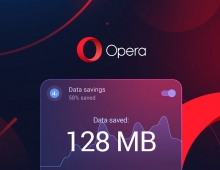
Opera Desktop Browser To Get Power Saving Mode
Opera software is adding another feature to the Opera browser for Mac and Windows computers: a dedicated power saving mode. Currantly available in the developer channel for Opera for computers, Opera says that the new feature has been designed to extend your laptop battery life by up to 50% compared with, for example, Google Chrome.
This is how it works: once the laptop’s power cable is unplugged, the battery icon will appear next to the search and address field in the Opera browser. You will be able to click the battery icon to activate the power saving mode and flip on the switch.
The browser will also suggest you enable power saving mode when your laptop reaches 20% remaining battery capacity.
In order to deliver these savings, Opera's software engineers have made under-the-hood optimizations:
- Reduced activity in background tabs
- Waking CPU less often due to more optimal scheduling of JavaScript timers
- Automatically pausing unused plug-ins
- Reduced frame rate to 30 frames per second
- Tuning video-playback parameters and forcing usage of hardware accelerated video codecs
- Paused animations of browser themes
The feature takes advantage of modern processors, which save power by taking "tiny naps" multiple times per second, and the code behind the new Opera browser wakes the processors up as infrequently as possible.
According to Opera's own tests, designed to reflect the way people use browsers in real life, the latest Opera developer version was able to run 50% longer than browsers like Google Chrome on a laptop running Windows 10, 64-bit.
In addition to the power saving mode, Opera has worked on improving the browser's the integrated VPN feature.So now you'll be able to browse some websites in VPN mode, while at the same time keep browsing other websites with VPN turned OFF. In addition, you'll be able to use the browser VPN in combination with private browsing.
Additionally, in the first release for VPN, there was an issue where your original IP could be found by the webpage through establishing an WebRTC connection. Opera has resolved this by deactivating WebRTC when in VPN mode.





















